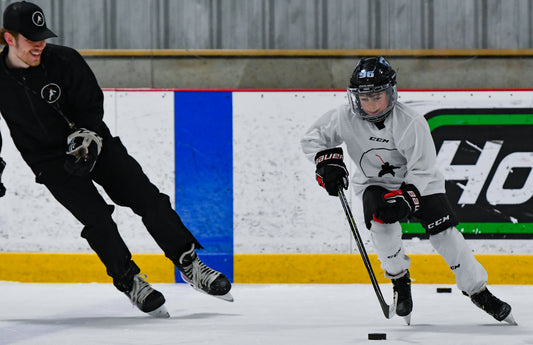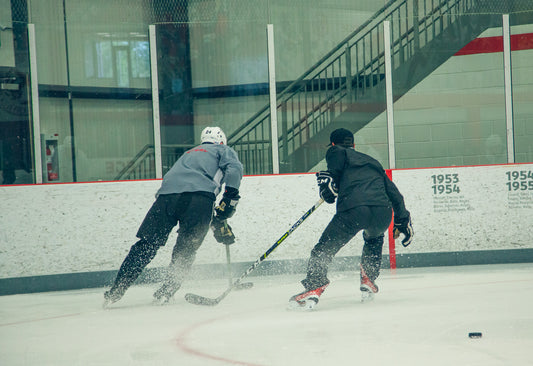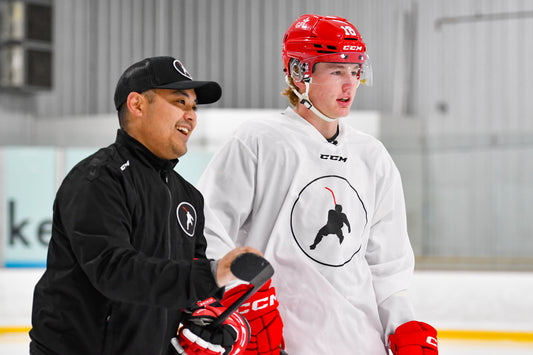Hiker to Hockey Player or the other way around?
It's not always fun to admit but the hockey industry is a bit archaic. Full disclosure, we are not. We are on top of it at its highest level. To be honest, there is nothing out there in the movement, skill, and performance industry that doesn’t fascinate us and we’re blessed to have so many university, NHL, and best in class people to reach out to for research insights on all the different modalities that can affect human performance on the ice. I tell people all of the time that this constant learning has brought life to my second career.
We don’t teach hockey. We build confident and skilled movers that can map the game. There’s a big difference. It’s that difference that makes us so unique and blessed to lead the performance game of hockey development.
Every single NHL athlete we work with says the same thing. You’re ahead. You’re the future. They see it because they are inside the shift of where the game is heading and they are living it and understand it’s importance. A lot of our success has to do with our belief in a strong correlation between General Physical Preparedness (GPP) as a precursor to Sport Specific Physical Preparedness (SPP). That’s a bit wordy, but in simple terms you could almost equate it to playing a lot of sports, but even that is still SPP. There is a structure to its play. GPP can be almost anything, but for me, there has to be an involvement of play.
Play what you might be asking? How about the hike I did last week with our first ever franchisee, Nathaniel Marx, who owns two franchises in Montreal, QC. As we we’re climbing in a foot of snow our ability to flex our hip and externally rotate while decelerating into our next step proved crucial for clearing the snow and having enough traction to climb a steep incline. But in order to figure out the pattern, I played with my movement. I tried it a couple of different ways, and this one just felt best.
That’s Play.
On that same hike, we had to decelerate down a steep rock cliff that involved different sized boulders, challenging our hip movement from flexion to external rotation to extension to internal rotation while unilaterally decelerating and planning ahead your next step. Your brain is turned on. I mean TURNED on.
That’s Play.
So, how does this relate to hockey development? We’ve known for a long time that one’s ability to control the body, meaning the body’s neural muscular connection, was at the forefront of movement performance development. Have you ever watched a martial artist train a highly technical kick? You’ll always notice a slower movement of execution early in the training phase to fire the central nervous system. Then, progressing to a higher tempo and adding more complex movement patterns to coordinate that same kick in a competition type speed scenario. But you see that’s SPP, which is still very important. After all, you’re not going to train a hiker into a hockey player. Or can you?
The answer is yes you can, and even more important is that the hockey player should be a hiker, walker, runner, water skier, snowboarder, skateboarder, dancer, parkour enthusiast, and a ballerina. The hockey player should also learn to play an instrument, learn to tie various knots, even learn to write cursive. The list can go on and on and on but I am sure you’re getting the point.
What does all this activity do?
Well, the science of it is a little complicated but the point is that all these activities affect the neuromuscular connection and when that connection is fluid, you’ve got maximum body control. An athlete with maximum body control has the ability to produce secondary gains, such as speed, power, and quickness. Unfortunately, the hockey world has it backwards. They forget the neuromuscular connection and how that should be first, the foundation to build upon the layers of performance of an athlete.
You see, GPP helps that brain/body connection. Throwing different enjoyable “play” activities into an athlete’s routines facilitates that nervous system connection. It helps make the signal stronger while building a better more versatile human. The PS Method was created with a strong correlation of GPP. You’ll often see players jumping out the door of the bench to focus on unilateral ankle and hip stability. Aside from looking good as you come out onto the ice, it more importantly connects via GPP.
You might see us standing on pucks, working ranges of movement that navigate an athlete outside their base of support, getting immediate feedback from the puck slipping, allowing the athletes to work a big concept that can transfer to any SPP activity including hockey. Today, I had my good friend Mark Barberio of the Colorado Avalanche doing this. It was his first time so he was a little wobbly, I queued him to play with his movement and he said that he felt like he was a Ninja. I can’t think of a more complete description of a discipline with better mind body connection.
So, whether you’re trying to be the next Mozart, Honnold (free climber from the movie, “Free Solo”, must watch by the way), or the new age Wayne Gretzky, don’t get too caught up in just working SPP. Have fun by doing activities away from the rink that can help forge a more fluid neuromuscular connection and get around coaches and programs that understand performance training that use GPP work as a base layer to complement a better functionality of SPP performance.
Hiker to Hockey Player? We say YES!! Not the other way around!




